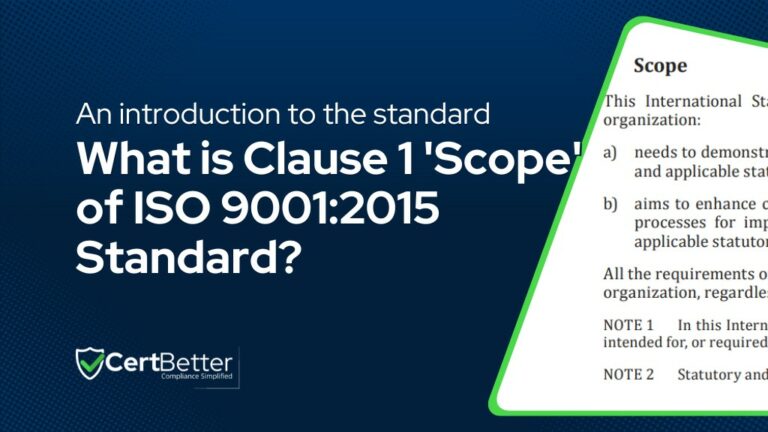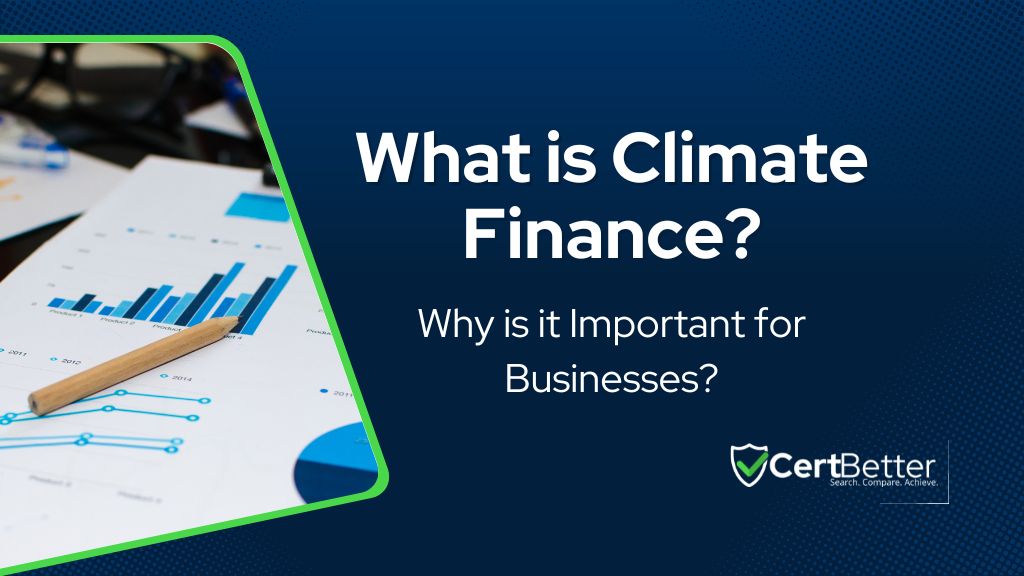Understanding Clause 1 Scope of ISO 9001 2015 With Examples

Clause 1, the Scope of ISO 9001:2015, is where we begin to understand this standard’s purpose and its reach. It’s like the entry point into the world of ISO 9001. Understanding this clause is crucial because it tells us who can use the standard – basically, any organization, big or small, no matter what they do or where they are.
It’s a quick read but an important one, as Clause 1 helps businesses get a clear idea of how they can apply ISO 9001 to their operations and start their journey towards better quality management.
Understanding Clause 1 Scope of ISO 9001:2015
This part of the standard is about setting the stage for everything else that follows, making sure that companies understand that ISO 9001 is flexible and can fit into different types of businesses. Understanding this first clause is like having a map in hand; it guides businesses on how to use the rest of the standard effectively.
Clause 1 of ISO 9001:2015, or the ‘Scope,’ is like the introduction to a book. It gives us a brief but clear idea of what the whole standard is about.
Clause 1 sets the scene, explaining that ISO 9001 is all about helping organizations consistently deliver quality products or services and keep improving.
Clause 1 also sets the boundaries, outlining what the standard covers and its goals.
In simple terms, this clause says that ISO 9001 is for organizations that want to consistently provide good quality products and services and make their customers happy. It’s not just for manufacturing or big corporations; any type of organization can use it.
How to Define Scope in ISO 9001:2015
Defining the scope is the first step in making ISO 9001 work for a business, helping them focus on improving quality in the right areas.
When businesses clearly outline their scope, they can focus on what’s important and make sure their efforts are directed in the right way.
Defining the scope in ISO 9001:2015 is like drawing the boundaries in a game. It’s about knowing where you can apply the rules of the standard.
Here’s a guide on how to approach this:
Understand Your Organization — Start by thoroughly analyzing your organization’s context. This includes the nature of your products or services, the processes involved, the market, customer requirements, and regulatory obligations. Understanding these elements will help you define the scope effectively.
Identify Internal and External Factors — Consider factors that could influence your QMS’s scope. These might include technological, legal, competitive, market, cultural, social, and economic environments in which your organization operates.
Consider Requirements — Look at the requirements of the ISO 9001:2015 standard and determine how they apply to your organization. Not all parts may be relevant to you, so it’s important to identify which aspects you need to focus on.
Engage Stakeholders — Involve key stakeholders in this process, including leadership, employees, and possibly customers or suppliers. Their input can provide valuable insights into defining the scope accurately.
Document the Scope — Once you’ve gathered all the necessary information, document the scope of your QMS. This should be a clear, concise statement that outlines what your QMS covers, highlighting any exclusions from the ISO 9001:2015 standard and justifying why they are not applicable.
Review and Update Regularly — The scope of your QMS may evolve as your organization grows or changes. Regularly review and update the scope to ensure it remains accurate and relevant.
Examples of Clause 1 Scope in ISO 9001:2015
Here are a few examples of how different organizations might define their scope for ISO 9001:2015:
Manufacturing Company:
The scope of our Quality Management System encompasses the design, manufacturing, and distribution of electronic components for commercial and industrial clients. It includes our headquarters and two manufacturing facilities. Exclusions from the ISO 9001:2015 standard have been identified in the areas of design for specific product lines that are manufactured based on customer-provided specifications.”
Software Development Firm:
“Our Quality Management System covers the development, testing, and deployment of software solutions for the finance sector. The scope includes our main office and remote development teams. Given the nature of our services, clause 7.1.5 (Monitoring and measuring resources) is not applicable since we do not require specialized monitoring and measuring equipment.”
Educational Institution:
“The scope of our QMS includes the provision of undergraduate and postgraduate education services and associated support services. It encompasses all departments and faculties within our main campus. Excluded from the scope are third-party services such as outsourced catering and security services.”
Healthcare Provider:
“Our Quality Management System applies to the delivery of healthcare services including general practice consultations, specialist referrals, and patient care management. The scope extends to all departments within our healthcare facility. Exclusions include pharmaceutical manufacturing as this is outsourced to accredited third-party providers.”
Common Questions
What exactly does Clause 1 of ISO 9001:2015 mean?
Clause 1, known as ‘Scope,’ outlines the purpose and applicability of the ISO 9001:2015 standard. It sets the stage for the Quality Management System (QMS), defining its boundaries and goals.
Is ISO 9001:2015 only applicable to specific industries?
No, this is a myth. Clause 1 specifies that ISO 9001:2015 is applicable to any organization, regardless of its size, type, or the products and services it offers.
Can small businesses benefit from implementing ISO 9001:2015?
Absolutely. ISO 9001:2015 is designed to be flexible and applicable to organizations of all sizes, including small businesses.
Does Clause 1 limit the scope of ISO 9001:2015 to specific geographic regions?
No, ISO 9001:2015, as outlined in Clause 1, is a global standard applicable to organizations worldwide.
Is Clause 1 of ISO 9001:2015 about compliance with legal requirements only?
While compliance with applicable legal requirements is part of ISO 9001:2015, Clause 1 emphasizes meeting customer requirements and enhancing customer satisfaction as well.
Does Clause 1 require businesses to apply the standard to their entire organization?
Not necessarily. Clause 1 allows businesses to define the scope of their QMS, meaning they can tailor it to specific parts of their organization if needed.
Is it true that Clause 1 makes ISO 9001:2015 too complex for small businesses?
This is a myth. Clause 1, and ISO 9001:2015 in general, is designed to be adaptable and can be implemented effectively by businesses of all sizes.
Can an organization exclude certain requirements of ISO 9001:2015 as per Clause 1?
Yes, organizations can exclude specific requirements that do not apply to their scope, as long as these exclusions do not affect their ability to ensure the conformity of their products and services.
Does Clause 1 change with each revision of ISO 9001?
While Clause 1 may be updated during revisions, its fundamental purpose of defining the scope and applicability of the standard typically remains consistent.
Is implementing ISO 9001:2015 a one-time activity?
No, implementing ISO 9001:2015 is an ongoing process. Clause 1 sets the stage, but continuous improvement and regular reviews are essential for maintaining an effective QMS.
Final Thoughts
Clause 1 Scope of the ISO 9001:2015 standard is the introductory section that outlines the primary purpose and applicability of the standard. It does not have any specific requirements for companies. By defining the standard’s reach and purpose, Clause 1 helps companies understand how to effectively implement and use ISO 9001:2015 in their specific context.
- Last updated: May 22, 2024
- CertBetter
Our community of compliance professionals and ISO experts is ready to provide you with insightful answers and practical solutions. Join the discussion now!
- Recommended Reads
- 36 reads
-
Frequently Asked Questions
Understanding ISO Terminology: Guide to Important Terms and Concepts
No posts found
ResetConnect with ISO Certification Consultants
CertBetter makes it easy to find ISO certification consultants and compliance professionals from around the globe.

